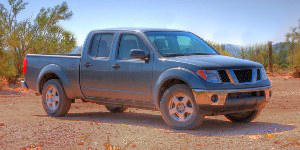 Extended cab pickup trucks are often seen on farms and construction sites. However, while the extra passenger space is useful, most farmers would tell you, that their truck is first and foremost a working vehicle.
Extended cab pickup trucks are often seen on farms and construction sites. However, while the extra passenger space is useful, most farmers would tell you, that their truck is first and foremost a working vehicle.
CRA Views Extended Cab Trucks as Passenger Vehicles
CRA has tended to disagree and has challenged and reassessed individuals for claims relating to a pickup truck with extended cab.
The challenge is based on the Income Tax Act definition of a pickup truck as a vehicle with seating for 1 to 3 people, including driver. A pickup truck with extended cab and seating for 4 to 9 people is classified as a passenger vehicle.
Passenger Vehicles Provide Fewer Tax Claims
Classifying extended cab trucks as passenger vehicles severely limits the Capital Cost Allowance (CCA), GST Input Tax Credit (ITC), lease and interest costs that may be claimed for tax purposes.
Some Exceptions
However, a pickup truck with extended cab used all or substantially all to transport goods, equipment, or passengers can be classified as a motor vehicle. All or substantially all is typically interpreted by CRA as that it’s used 90% or more for business use. To support this, a comprehensive log of vehicle use is usually required.
Taxable Benefits
If not supported, CRA automatically assumes the vehicle was driven at least 20,000 kilometres per year for personal use. The personal use of the vehicle is considered a taxable benefit and is taxed in the form of a standby charge and operating expense benefit.
Standby charges amount to 2% per month of the original cost of the vehicle or two-thirds the value of the lease payment. On a $40,000 vehicle, the standby charges and operating benefit could be significant. The personal mileage threshold is 20,000 kilometres and reduces the standby charge proportionally for any personal driving that is less than that amount.
Another exception for a pickup truck with extended cab is if it’s used more than 50% for the transportation of goods, equipment or passengers at work sites at least 30 km from the nearest urban center having a population of 40,000. It would then be considered a motor vehicle, not a passenger vehicle.
Case of 2 Farmers and 2 Pickups
In one case, two farmers operating a corporate farm were able to provide detailed, but still general, data about their usage of two corporate-owned extended cab trucks. The trucks were used to haul grain samples to various elevators for grading and pricing and also great distances to obtain replacement parts for equipment.
The judge found their presentation credible enough to stand without a log and they were entitled to have their standby charges reduced accordingly. The judge however, affirmed that the trucks were properly classified as automobiles. In an earlier decision, another judge had ruled the trucks as motor vehicles.
The judge who found the non-log supported case to be credible also agreed with a previous judgment that CRA’s interpretation of all or substantially all to mean in excess of 90% might be too limiting. Both of these judges found that 80%, and perhaps even less, might meet the test, leaving another avenue of appeal for vehicle owners who may wish to contest CRA reassessments.
Generally, a detailed log book of vehicle use is the best way to prove your case both with CRA and the tax court.
Should You Collect GST/HST on the Sale of a Vehicle?
When it comes time to sell your truck, the classification, as outlined above, as well as the ownership, dictate whether you should collect GST/HST on the sale price.
For motor vehicles:
- <= 50% No GST/HST collection
- 50% Collection on full sale price
For passenger vehicles (individual-owned):
- < 90% No GST/HST collection
- >= 90% Collection on full sale price
For passenger vehicles (corporate-owned):
- <= 50% No GST/HST collection
- 50% Collection on full sale price
Want More Tax Saving Tips?Request our article, Top 6 Audit Triggers, so you know what will get CRA’s attention and what you can to to avoid it. |
